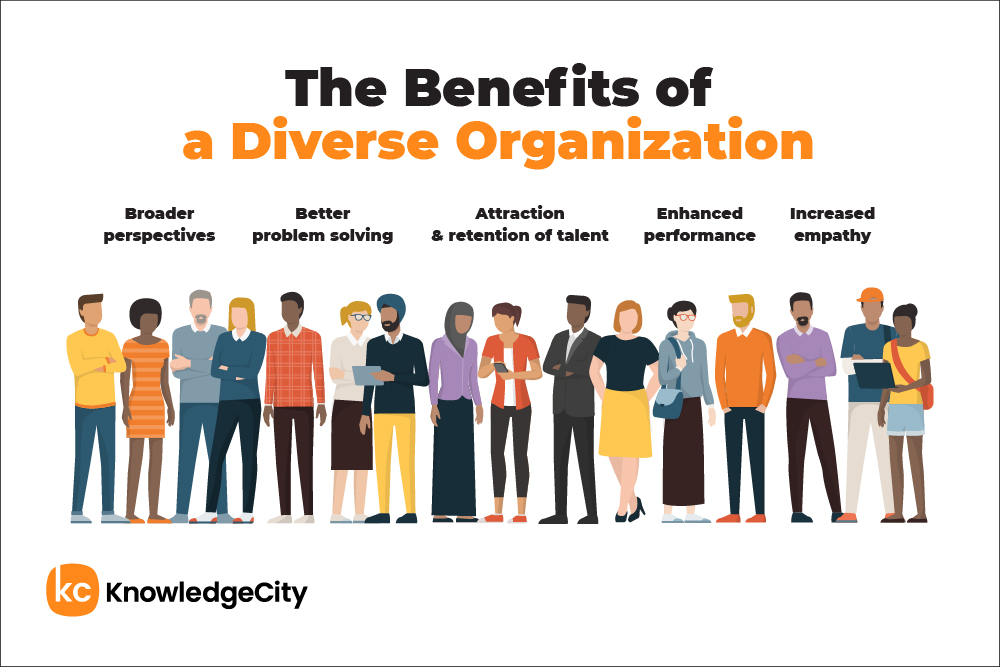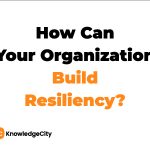In an era where global connections are closer than ever, building a diverse workplace is no longer optional. Embracing diversity unlocks creativity, fosters innovation, and taps into global markets.

The Importance of Diversity in the Workplace
The Evolving Business Landscape
The business landscape is ever-changing because of globalization, technological advancements, and social shifts. Creating a diverse team can help an organization adapt to these changes, positioning it for success.
According to McKinsey & Company, the importance of diversity, equity, and inclusion (DEI) in the workplace is “stronger than ever.” Top companies recognize that diverse teams drive innovation, enhance decision-making, and contribute to better business performance.
Meeting the Expectations of Diverse Clients
Today’s consumer base varies incredibly, spanning different cultures, languages, and preferences. Meeting the expectations of such diverse clients requires a deep understanding of their needs, including:
- Cultural sensitivities
- Language preferences
- Purchasing behaviors
- Local customs
- Values
- Expectations
Employees from different backgrounds can provide unique insights into various markets, tailoring products or services that cater to distinct customer requirements. Recognizing these differences can drive tailored solutions that resonate deeply with various customer segments.
Types of Diversity
Racial and Ethnic Diversity
Racial and ethnic diversity involves the recognition and inclusion of people from various backgrounds, traditions, values, and more.
In a workplace setting, racial and ethnic diversity means intentionally hiring, supporting, and celebrating employees from diverse racial and ethnic origins. Doing so ensures they have an equal voice and opportunity within the organization.
Embracing various ethnicities and races allows people to contribute their varied perspectives, which can enrich the organization’s culture. It reflects a sense of fairness and inclusivity, promoting belonging among employees. Diversity also fosters a creative environment where unique ideas from different cultural contexts can contribute to innovative solutions.
Gender and Sexual Orientation Diversity
Gender and sexual orientation diversity is critical to promoting organizational equality. Ensuring that all genders and orientations have equal opportunities and are represented fairly abides by ethical principles and leads to better decision-making.
This decision-making becomes more nuanced because it considers the intricate aspects and complexities of different gender identities and sexual orientations. By doing so, organizations gain a deeper understanding of the challenges and opportunities unique to each group, resulting in more thoughtful and inclusive decision-making processes.
Furthermore, this inclusive decision-making not only promotes equality but is also aligned with both organizational goals and societal values on gender and sexual orientation. It creates a workplace that’s not only diverse but also more innovative and responsive to change.
When organizations embrace a wide range of perspectives, they naturally foster an environment of diverse thinking. This diversity of thought stimulates creative problem-solving and adaptability, contributing to a workplace culture that embraces and thrives on diversity.
Generational Diversity
Generational diversity brings together various points of view, balancing tried-and-true methods with new, innovative approaches. These methods refer to the established, proven practices and strategies that have consistently shown positive results over time, especially those older employees have adopted. This type of diversity encompasses traditional communication, along with hierarchical decision-making and work ethics.
These methods have been effective in their time, but technological advancements and changing social norms have made it necessary to adopt newer approaches. For example, having grown up in a more digital and connected world, young generations often bring innovative plans to the table, like digital communication, collaborative decision-making, flexibility, and work-life balance.
Older employees often bring a wealth of experience and historical insights, while younger employees might offer a fresh take on capitalizing on technology and emerging trends. This interplay of know-how promotes mutual learning and growth.
One particularly powerful result of generational diversity is mentorship. Older employees can act as mentors to younger colleagues, guiding them through the industry and helping them navigate career challenges. Younger employees can reciprocate by mentoring older colleagues in technology and contemporary market trends.
Cognitive and Skill Diversity
Cognitive diversity refers to the differences in how people think about, interpret, and approach problems. Different skills and thinking processes add depth and complexity to team problem-solving.
This includes skills like analytical thinking, which breaks complex problems into smaller parts; holistic thinking, which considers problems in the context of the whole system; and innovative thinking, creating new ideas outside the usual boundaries.
Skill diversity, on the other hand, emphasizes the various talents and abilities individuals bring to the table. For example, you could have employees with technical skills such as proficiency in programming languages. Others might have communication skills for effective engagement or leadership skills for motivating and guiding teams.
The Benefits of Cultivating a Diverse Workplace
Enhanced team performance and problem-solving: A diverse team approaches problems from various angles, leading to comprehensive and robust solutions. They can break out of conventional patterns and explore innovative solutions.
Conflict resolution: Varied viewpoints can lead to more balanced and mediated solutions in team disagreements, enhancing collaboration.
Risk management: Diversity of thought allows for a broader assessment of potential risks and challenges, enabling a more strategic approach to problem-solving that considers more factors than what a homogenous team would have considered.
Global expansion strategies: Insights from diverse team members who understand international markets can aid in formulating effective global growth strategies.
Broader perspectives: Having a mix of genders and sexual orientations within a team ensures that different life experiences and perspectives are brought to the table. This can lead to more creative and comprehensive solutions.
Increased empathy: Understanding and valuing differences create a more empathetic workplace, fostering collaboration, reducing conflicts, and enhancing team cohesion and effectiveness.
Better reflecting the customer base: Many organizations serve a diverse customer base with varied genders and sexual orientations. Having that diversity mirrored within the organization can lead to a deeper understanding of customer needs and wants, resulting in products and services that resonate more broadly.
Attraction and retention of talent: An equitable environment attracts a wider talent pool and increases employee satisfaction and retention. The sense of fairness and inclusion often translates to higher engagement and productivity.
Connection to social responsibility and brand image: In a world where social responsibility is highly valued, emphasizing diversity signifies a company’s alignment with broader societal values and commitment to a fair and just world. This enhances the brand’s reputation and attracts customers, partners, and employees who share these values.
How To Lead With Diversity in Mind
Adopting Personal Leadership Behaviors
Leaders play a pivotal role in building and leading diverse organizations because their behavior sets the example for others. They can foster an inclusive environment by adopting those behaviors that support diversity, like respect, empathy, openness, and encouragement. These behaviors clearly convey that diversity is integral to the organization’s identity and success.
Implementing Diversity and Inclusion Strategies
Building and sustaining diversity requires clear policies, procedures, and strategies. This includes targeted recruitment efforts that reach different communities and backgrounds, ongoing training to foster an inclusive culture, and regular assessments to measure progress. Tools like diversity scorecards and inclusion surveys can provide valuable insights into the current state of diversity within the organization.
Training and Development in Diversity Leadership
Regular training and development are vital for maintaining and enhancing efforts to increase diversity. From unconscious bias training to leadership development that focuses on inclusive practices, training ensures that employees at all levels understand diversity’s value, the behaviors that support it, and the strategies to promote it.
Building DEI: Tailoring Programs to Specific Needs
Diversity, equity, and inclusion programs need to be customized to fit a company’s specific needs. What works for one organization might not work for another. Building DEI requires understanding the organization’s unique challenges and goals. It needs collaboration between various departments and an integrated approach that aligns DEI with the overall business strategy.
For instance, a tech company might identify a unique need in its DEI efforts: a lack of women in leadership roles. To address this, the company could tailor its program by implementing mentorship initiatives, leadership training specifically for women and flexible work arrangements to support a better work-life balance.
This customization aligns with the company’s goal of increasing gender diversity in leadership, addressing their specific challenge while fostering a more inclusive workplace.
Strategies for Building Diversity
Conducting a Comprehensive Diversity Audit
Building diversity starts with understanding where the organization stands. The audit might include providing surveys, giving interviews, and hosting focus groups. It could also include an analysis of existing data. It sets the benchmark, allowing for progress measurement and strategy adjustments. A comprehensive diversity audit identifies strengths and weaknesses, helping to tailor strategies that align with specific needs.
Creating an Inclusive Culture Through Communication
Open communication is key to building trust, understanding, and a sense of belonging among employees. Transparently communicating about policies, decisions, and expectations fosters a sense of trust and alignment. Regular forums, town halls, or interactive platforms where employees can express their views, share their experiences, or ask questions promote a culture where everyone’s voice matters.
Addressing Bias and Discrimination
Bias and discrimination are often the most significant obstacles in building and leading diverse organizations. Addressing these requires a multifaceted approach that includes awareness training, clear policies, robust reporting mechanisms, and leadership commitment. The culture should actively discourage and challenge bias and discrimination.
Leverage External Resources and Expertise
Sometimes, steering the organization toward greater diversity requires external resources. Using such resources might include consulting with diversity experts, collaborating with organizations that specialize in DEI, or capitalizing on external tools and platforms that facilitate diversity management.
Leveraging external resources and expertise brings fresh perspectives, specialized knowledge, and unbiased assessments. It can accelerate diversity efforts, ensuring alignment with best practices and global standards.
Conclusion
Leaders who integrate diversity into their core strategies will likely find the path rewarding, although challenging. Diversity goes beyond fairness and social responsibility and should be recognized as a catalyst for growth, innovation, and long-term success.
Subscribe to Our Newsletter
Join 80,000+ Fellow HR Professionals. Get expert recruiting and training tips straight
to your inbox, and become a better HR manager.

 Chuk Otakpor
Chuk Otakpor 










